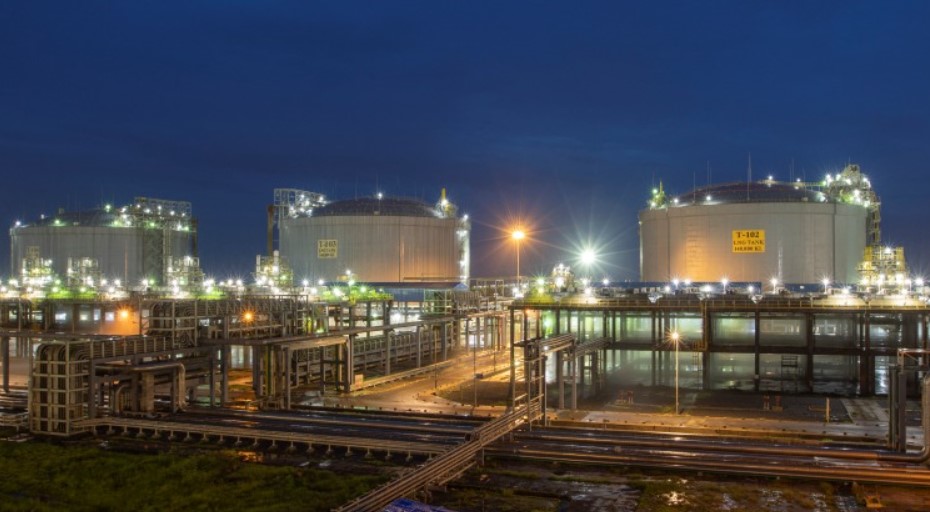Taiwan's Nuclear Phase-Out: The Rise Of LNG Imports

Table of Contents
The Decline of Nuclear Power in Taiwan
The Political Context
Public opposition to nuclear power, significantly amplified following the 2011 Fukushima Daiichi disaster in Japan, accelerated the Taiwanese government's commitment to a nuclear-free future. This decision was driven by significant public pressure and a desire to enhance energy security, particularly in the face of potential earthquakes and tsunamis.
- Fukushima Daiichi impact: The Fukushima accident heightened public awareness of the risks associated with nuclear power, leading to widespread protests and calls for the closure of Taiwan's nuclear plants.
- Public protests: Large-scale demonstrations and civil society activism played a crucial role in shaping public opinion and influencing government policy.
- Government policy shifts: The government responded to public pressure by announcing a timeline for the phasing out of nuclear power, setting ambitious targets for renewable energy adoption.
- Timeline of nuclear plant closures: The gradual closure of Taiwan's nuclear power plants commenced, creating a significant energy gap that needed to be filled.
The Challenges of Replacing Nuclear Capacity
Replacing the substantial energy output from nuclear plants presented a formidable challenge. The rapid diversification of energy sources, primarily focusing on natural gas, demanded significant logistical and infrastructural investment.
- Capacity gap analysis: Studies revealed a considerable shortfall in energy generation capacity following the nuclear phase-out, necessitating a substantial increase in energy imports.
- Reliance on foreign energy sources: This increased reliance on imported LNG heightened vulnerability to global price fluctuations and geopolitical instability.
- Vulnerability to global price fluctuations: The global LNG market is susceptible to price volatility, impacting electricity prices in Taiwan and potentially causing economic instability.
The Surge in Taiwan LNG Imports
Increased LNG Terminal Capacity
To accommodate the increased demand for LNG, Taiwan has invested heavily in expanding its import infrastructure. This involves building new terminals and upgrading existing facilities to handle the larger volumes of LNG.
- New terminal projects: Several large-scale LNG terminal projects have been initiated to increase import capacity and ensure a reliable energy supply.
- Expansion of existing facilities: Existing LNG terminals have undergone significant upgrades to improve efficiency and handling capacity.
- Investment figures: Billions of dollars have been invested in the expansion and modernization of Taiwan's LNG import infrastructure.
- Logistical improvements: Efforts have focused on streamlining the logistics of LNG transportation, storage, and distribution.
Diversification of LNG Suppliers
To mitigate the risks associated with over-reliance on a single supplier, Taiwan has actively pursued contracts with multiple international LNG producers. This strategy aims to enhance energy supply security and reduce vulnerability to geopolitical events.
- Key LNG supplier countries: Taiwan sources LNG from a range of countries, including Australia, the United States, and Qatar, among others, to diversify its supply chain.
- Strategies to enhance energy supply security: Long-term contracts, strategic partnerships, and flexible sourcing strategies are employed to ensure a reliable LNG supply.
- Contract negotiation details: The negotiation of favorable and long-term contracts with LNG producers is crucial in mitigating price risks.
The Economic Impact of LNG Imports
The increased reliance on LNG imports has significant economic implications, directly impacting energy costs and the overall trade balance.
- Impact on electricity prices: Fluctuations in global LNG prices directly affect electricity prices in Taiwan, impacting households and businesses.
- Effects on inflation: Increased energy costs contribute to inflationary pressures, impacting the overall economic stability of Taiwan.
- Trade balance fluctuations: The substantial increase in LNG imports affects Taiwan's trade balance, potentially leading to deficits.
- Potential for energy price volatility: The volatile nature of the global LNG market poses risks to Taiwan's economic stability.
Environmental Considerations and Future Prospects
Environmental Impact of LNG
While a cleaner alternative to coal, the transition to LNG raises environmental concerns, primarily related to greenhouse gas emissions and the potential for methane leaks during extraction, transportation, and storage.
- Greenhouse gas emissions associated with LNG: LNG combustion releases greenhouse gases, contributing to climate change, although emissions are lower compared to coal.
- Methane leakage mitigation strategies: Efforts are underway to reduce methane leakage throughout the LNG supply chain, a potent greenhouse gas.
- Comparison to coal and nuclear power: While LNG offers a lower-carbon footprint compared to coal, its emissions remain higher than nuclear power.
The Role of Renewable Energy
Taiwan's long-term energy policy emphasizes the gradual integration of renewable energy sources to reduce its carbon footprint and enhance energy independence.
- Government targets for renewable energy: The government has set ambitious targets for renewable energy generation, including solar, wind, and other sources.
- Investments in solar and wind power: Significant investments are being made in developing solar and wind power infrastructure.
- Challenges associated with renewable energy integration: Challenges remain in integrating intermittent renewable energy sources into the electricity grid reliably.
Long-Term Energy Security Strategies
To ensure long-term energy security and sustainability, Taiwan needs to continue diversifying its energy sources and investing in infrastructure.
- Strategic partnerships: Collaborations with other countries and international organizations are essential in securing diverse and reliable energy supplies.
- Technological advancements: Investment in research and development is crucial for improving energy efficiency and developing new technologies.
- Future energy mix projections: The future energy mix is likely to involve a combination of LNG, renewable energy, and potentially other sources.
Conclusion
Taiwan's phase-out of nuclear power has led to a substantial increase in Taiwan LNG imports, creating a complex energy landscape. Balancing energy security, economic stability, and environmental concerns is paramount. Continued investment in LNG infrastructure, diversification of supply sources, and a determined push towards renewable energy integration are crucial for achieving a sustainable and resilient energy future. To remain informed about the latest developments in Taiwan's energy transition, continue searching for updates on Taiwan LNG imports, "Taiwan energy policy," "Taiwan renewable energy," and "Taiwan energy security."

Featured Posts
-
 Plans D Urbanisme De Detail En Cote D Ivoire Bruno Kone Et La Participation Des Maires
May 20, 2025
Plans D Urbanisme De Detail En Cote D Ivoire Bruno Kone Et La Participation Des Maires
May 20, 2025 -
 Amorim Delivers Man Utds Game Changing Forward Signing
May 20, 2025
Amorim Delivers Man Utds Game Changing Forward Signing
May 20, 2025 -
 Rusenje Daytonskog Sporazuma Tadiceva Analiza Politickog Sarajeva
May 20, 2025
Rusenje Daytonskog Sporazuma Tadiceva Analiza Politickog Sarajeva
May 20, 2025 -
 Ferraris Chinese Gp Start Hamilton And Leclercs Contact
May 20, 2025
Ferraris Chinese Gp Start Hamilton And Leclercs Contact
May 20, 2025 -
 Ewdt Ajatha Krysty Bfdl Aldhkae Alastnaey Thlyl Wtathyr
May 20, 2025
Ewdt Ajatha Krysty Bfdl Aldhkae Alastnaey Thlyl Wtathyr
May 20, 2025
Latest Posts
-
 50 Years Of Gma A Paley Center Tribute
May 20, 2025
50 Years Of Gma A Paley Center Tribute
May 20, 2025 -
 Paley Center To Honor Gmas 50th Anniversary
May 20, 2025
Paley Center To Honor Gmas 50th Anniversary
May 20, 2025 -
 Nyt Mini Crossword Answers And Hints April 26 2025
May 20, 2025
Nyt Mini Crossword Answers And Hints April 26 2025
May 20, 2025 -
 Unlock The Nyt Mini Crossword April 26 2025 Hints
May 20, 2025
Unlock The Nyt Mini Crossword April 26 2025 Hints
May 20, 2025 -
 Will Trents Ramon Rodriguez Recounts Unlikely Scorpion Sting Incident
May 20, 2025
Will Trents Ramon Rodriguez Recounts Unlikely Scorpion Sting Incident
May 20, 2025
